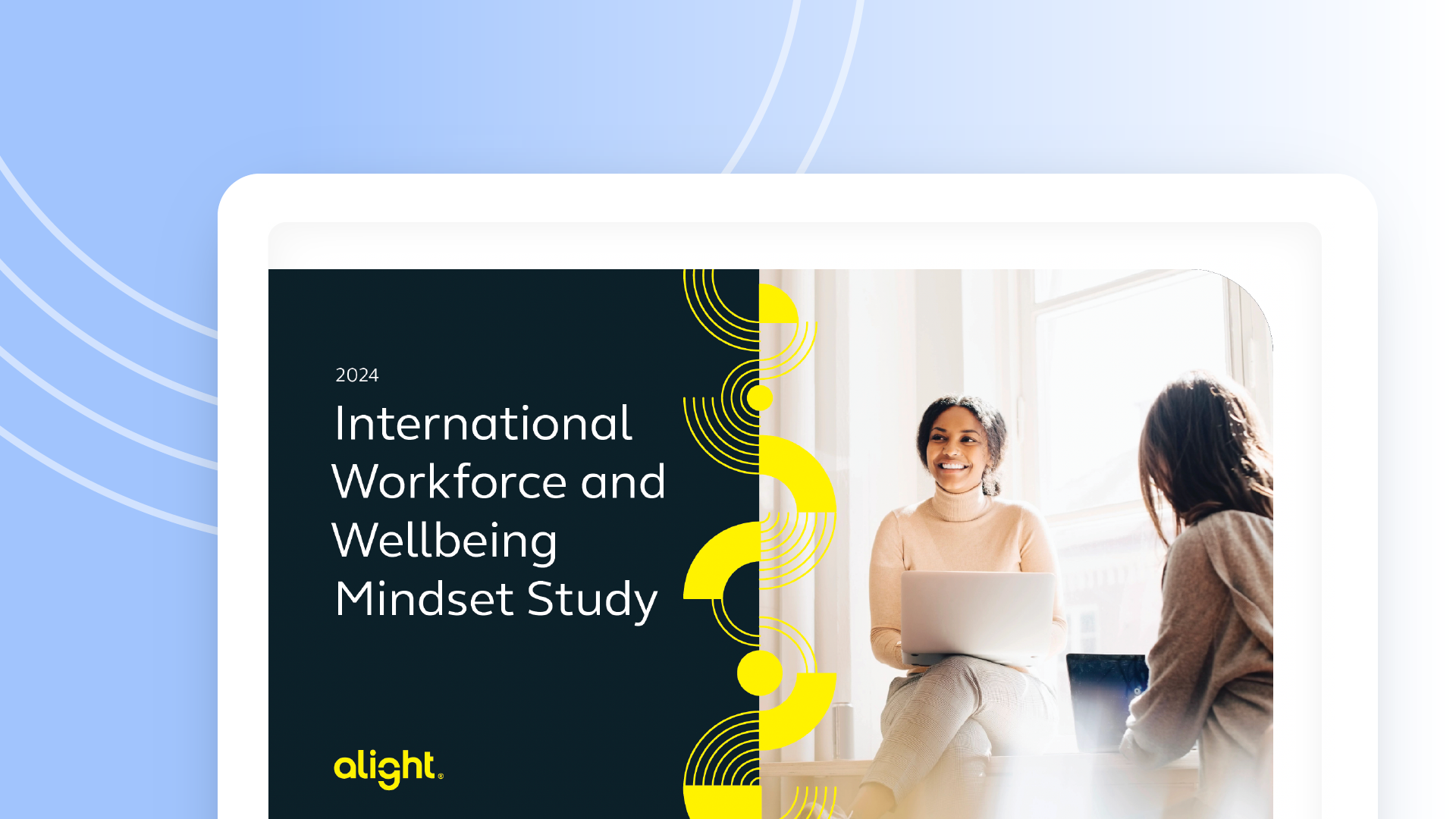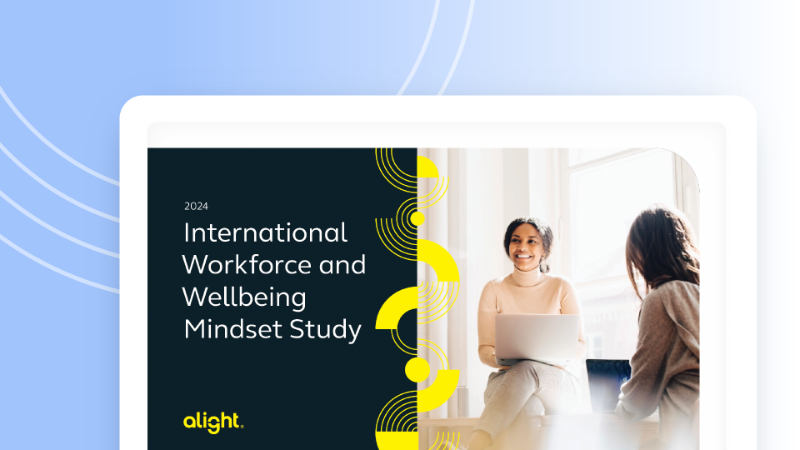
“Hey, what are you doing with AI?”
If you’re an HR leader, you’ve probably fielded that question a few times in recent years. And if you’re like 75% of the HR leaders interviewed in Alight’s 2024 Workforce and Wellbeing Mindset Study, you believe you must adopt AI to avoid falling behind but haven’t yet implemented an AI-enabled HR platform. If you’re among the remaining 15% however, you’ve already begun implementation.
The disparity between implementation urgency and the broader reality may be fueled by the desire to get it right. Smart human resource leaders understand that the AI tech itself isn’t the end goal — better outcomes are. And AI is only one tool that can be used to help people — your employees, their families and those on your team who extend the support. So how do you keep the focus where it belongs as you move forward to implement or expand AI in HR?
Alight conducts the Mindset study annually to help us with these questions and more. The study allows us to understand how the needs and perceptions of employees are shifting and provides the insights needed to identify solutions. For 2024, there were three themes that surfaced from employee responses when asked about their expectations for HR technology:

Download the study
2024 Alight International Workforce and Wellbeing Mindset Study
- High-tech has to meet up with high-touch. Alight asked about the technology environment employees can access, and what it provides. There are huge opportunities to continue to advance self-service digital support — and employees appreciate tools that facilitate that support. Only 12% of employees indicated they were "fully supported"(meaning they had app/website/digital tools for health, wealth and wellbeing along with personalized high-touch support). Those who were fully supported rated their wellbeing almost 50% higher than those who were not. However, employees indicated there are still times when speaking with someone knowledgeable and helpful is valuable. Employees remember conversations with skilled support staff who help them navigate complicated questions about their benefits. Again, the AI tech is not the end goal — better outcomes are.
- Personalization must be redefined to meet people "in the moment." Personalization has historically helped employees with questions like, “What benefit plans am I eligible for?” But tech and AI can improve on that approach by incorporating data on the employee’s individual circumstances (e.g., are they going through a life event, a promotion or a healthcare issue?) to evaluate what's relevant and meaningful for them right now. For example, personalization through generative AI can suggest the next-best action for an employee with questions about their options when faced with an unexpected leave of absence due to a medical condition. This helps in situations where people may not remember all that is available to them during a crisis.
Our Mindset study found that only 53% felt pay, benefits and wellbeing communication is effective; only slightly more felt it was relevant to them. And there’s real opportunity for improvement in this area: 58% of employees indicated they regretted a healthcare decision they’d made in the last year. Naturally, sharing employee data raises the question of how far you should go with AI to enable greater HR personalization. We found that 2 out of 3 employees are open to sharing data for more personalized guidance. - Remove friction from the benefits experience. Think about your HR and benefits ecosystem from the point of view of an employee. How many benefit plans, policies, programs, point solutions and resources do you have? Are they connected? How easy is it for an employee to navigate those resources and understand the information that’s presented to them? What happens when they face unplanned life events?
You can have world-class benefits, but they’re only valuable to your employees if they’re accessible at the right time. Does your ecosystem still support people, even when they’re going on an unplanned leave of absence? Here’s where the right technology can make a major difference. Nine in 10 employees told us that they feel it’s important to have a one-stop-shop app for their health, wealth and wellbeing needs. Technology can connect different platforms and benefits offerings. Generative AI can help by organizing large amounts of complex information, personalizing the information and recommendations and presenting it in an easy-to-understand way.
As HR leaders look to elevate the employee experience and drive better outcomes, thoughtful use of AI allows for cost-effective improvements that complement the support provided by trained experts. Get the balance of high-touch and high-tech right, and everyone wins.

Alight’s 2024 Workforce and Wellbeing Mindset Study.
Download the complete report on Alight’s 2024 Workforce and Wellbeing Mindset Study.


